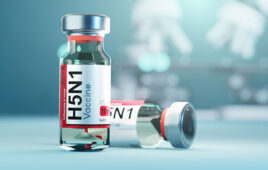Research and Markets has announced the addition of the “Japan Biosimilar – Active Players In Quest of a Specialty & Niche BS Space” report to their offering.
The encouraging uptake of Filgrastim BS and Lantus BS in 2015 in Japan is indicative of Japan being one of the key markets, after the EU, for the growth of biosimilar players in the next five years. Less stringent regulatory environment vs. U.S. for approval, increasing healthcare burden and strong foothold of the marketers have played key roles in this early uptake.
In contrast, there is a very slow uptake of Remicade biosimilar, one year on from its initial launch (-1% volume share). Biosimilars are still seen as the key weapon to curbing soaring healthcare costs in Japan & there is pressure on Chuikyo (Central social Insurance Medical Council) by Zaimu-sho (Ministry of Finance- Japan) to increase the use of biosimilars. We see that Abenomics measures and government involvement in biosimilars use would lead to the same type of progress for complex mAb biosimilars in the coming years in Japan.
The launch of Sandoz EU approved dosage form of Filgrastim BS in Japan, and Lantus BS based mainly on foreign studies (only one PhIII study involved JP patients from the eight studies submitted for approval) along with Celltrion-NK Remicade biosimilar in 2014/2015 in the Japan pharma market demonstrated more flexibility for EU- Ex-Japan data by JP regulatory authorities for a biosimilar approval and a less stringent path vs. U.S. for BS approval.
Biosimilars of Complex mAb structure are expected to grow to a cumulative market size of ¥300b in the next three years in Japan. It will open doors for the first oncology biosimilar mAb in Japan after Remicade BS launch in 2014, while over the next 7 years it is anticipated to be worth a cumulative ¥600b.
While analyzing biosimilar penetration since its 2009 launch in Japan (Growth hormone, Erythropoietin, G-CSF), use of the product in DPC hospitals, simple protein moiety and product reimbursement under high cost medical care benefit programme of NHI/JP government are the key JP specific factors which decide uptake timeline and penetration of each biosimilar in Japan.
In the last five years, most of the companies have some alliance in place for biosimilars, with most of the Japanese companies undertaking pacts with South Korean companies to ride on the back of biosimilar mAb expertise. There is a trend of seeking out product specific alliances by most of the JP companies active in the BS space and to go step by step on these high risk/high return opportunities. Overall, in Japan’s market, each opportunity has a different competitive landscape for itself, and some companies are looking for niche opportunities in biosimilar space as per their specialty therapy area- like ophthalmology BS (Lucentis), Enzyme therapy BS (JCR).
This report attempts to analyze trends and requirements of regulatory approval of biosimilars based on Ex-Japan clinical trial data, factors responsible for each key launched biosimilar penetration (Made in Japan vs. Tested by Japan), and the future competitive landscape in the biosimilars space in Japan. It also attempts to analyze in detail the BS market of EPO, Filgrastim/Pegfilgrastim/ Insulin/Lantus apart from other key complex Mab Biosimilar opportunities and list out niche opportunities in biosimilar space in Japan. It details all major consolidation activities done by JP/Foreign companies in biosimilar space in the last five years and crisp summary on strategies of each key player (-21 JP local companies, multinational companies), their interest & focus for future collaborations in the biosimilar space.
Follow us on Twitter and Facebook for updates on the latest pharmaceutical and biopharmaceutical manufacturing news!
Filed Under: Drug Discovery




